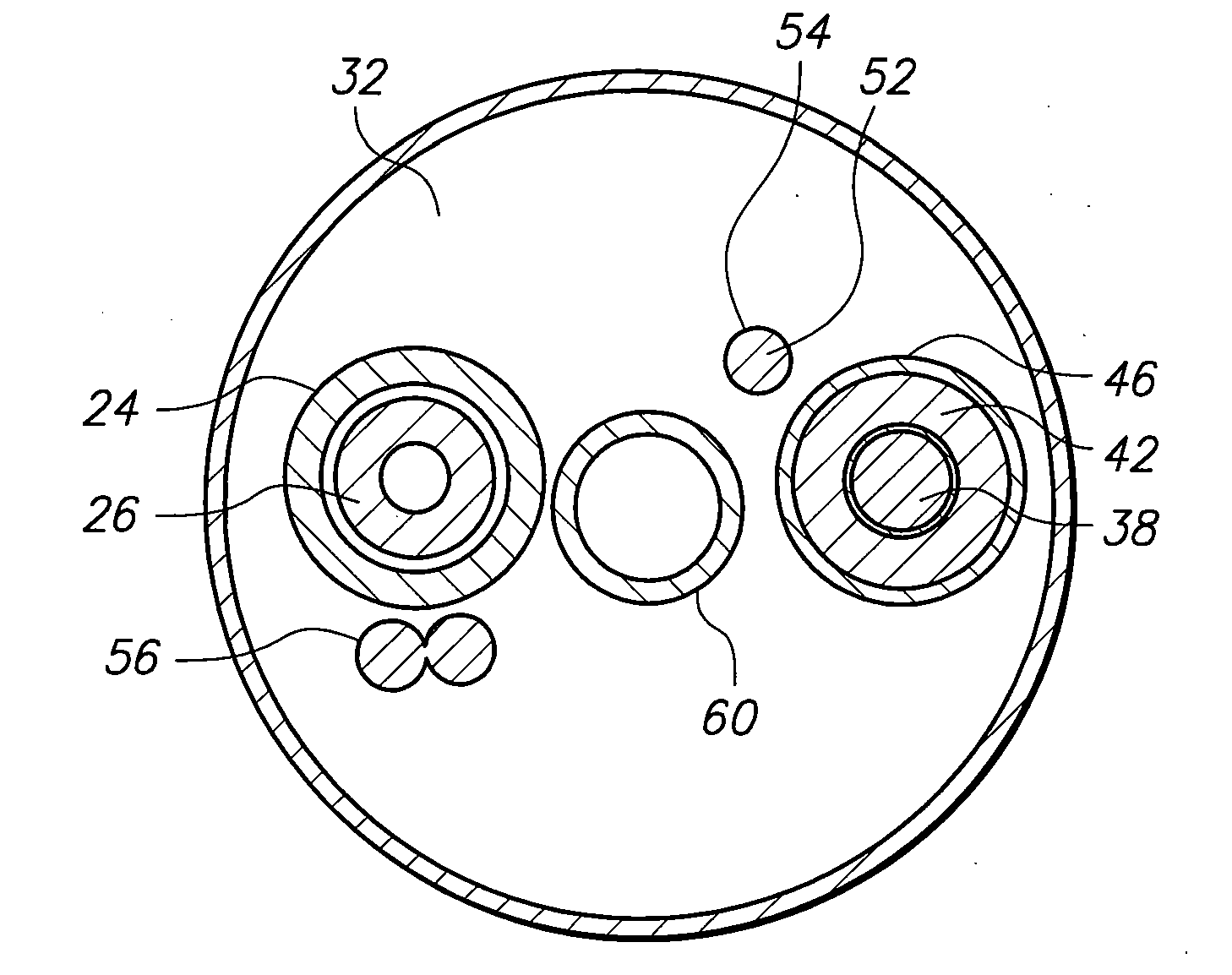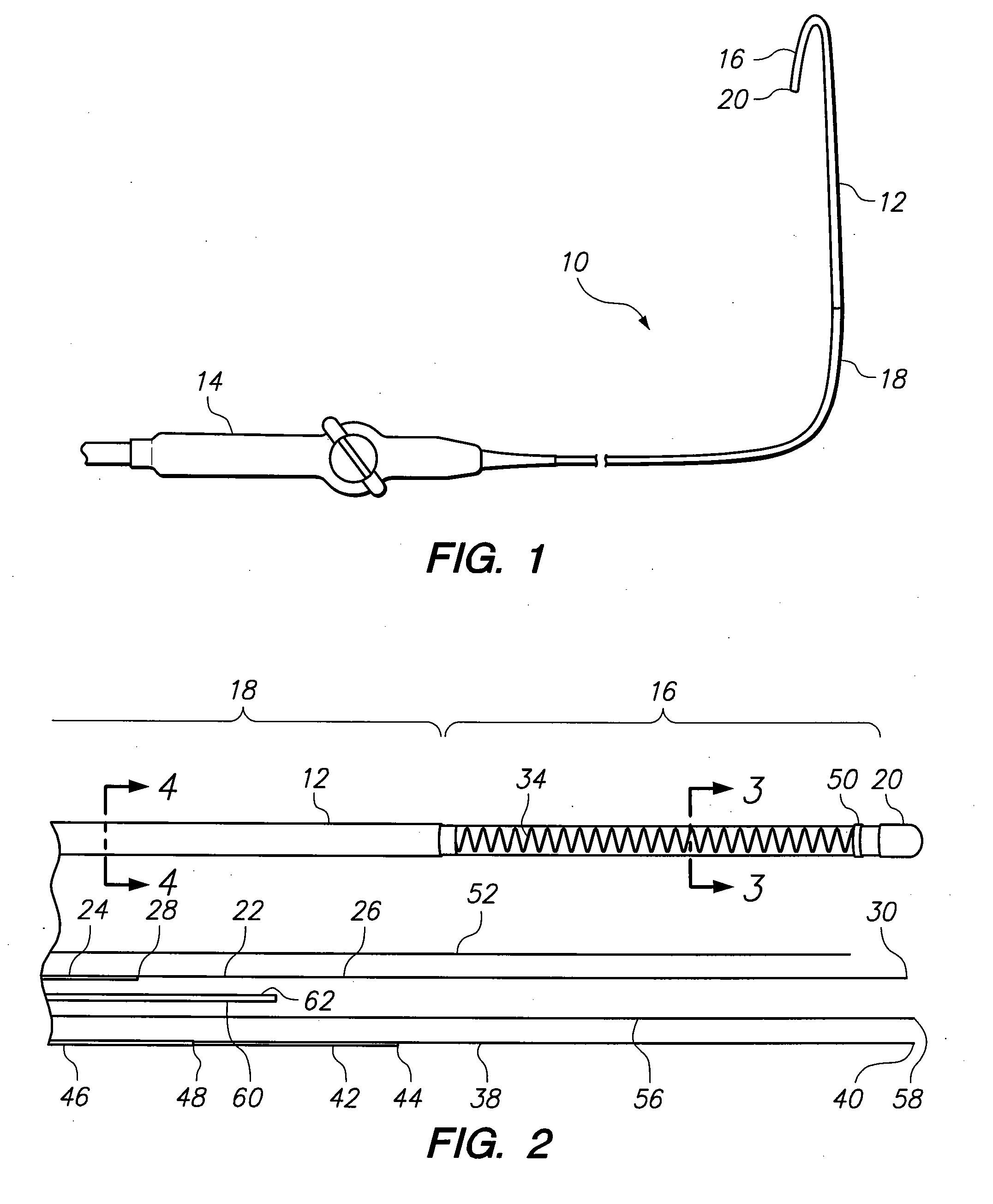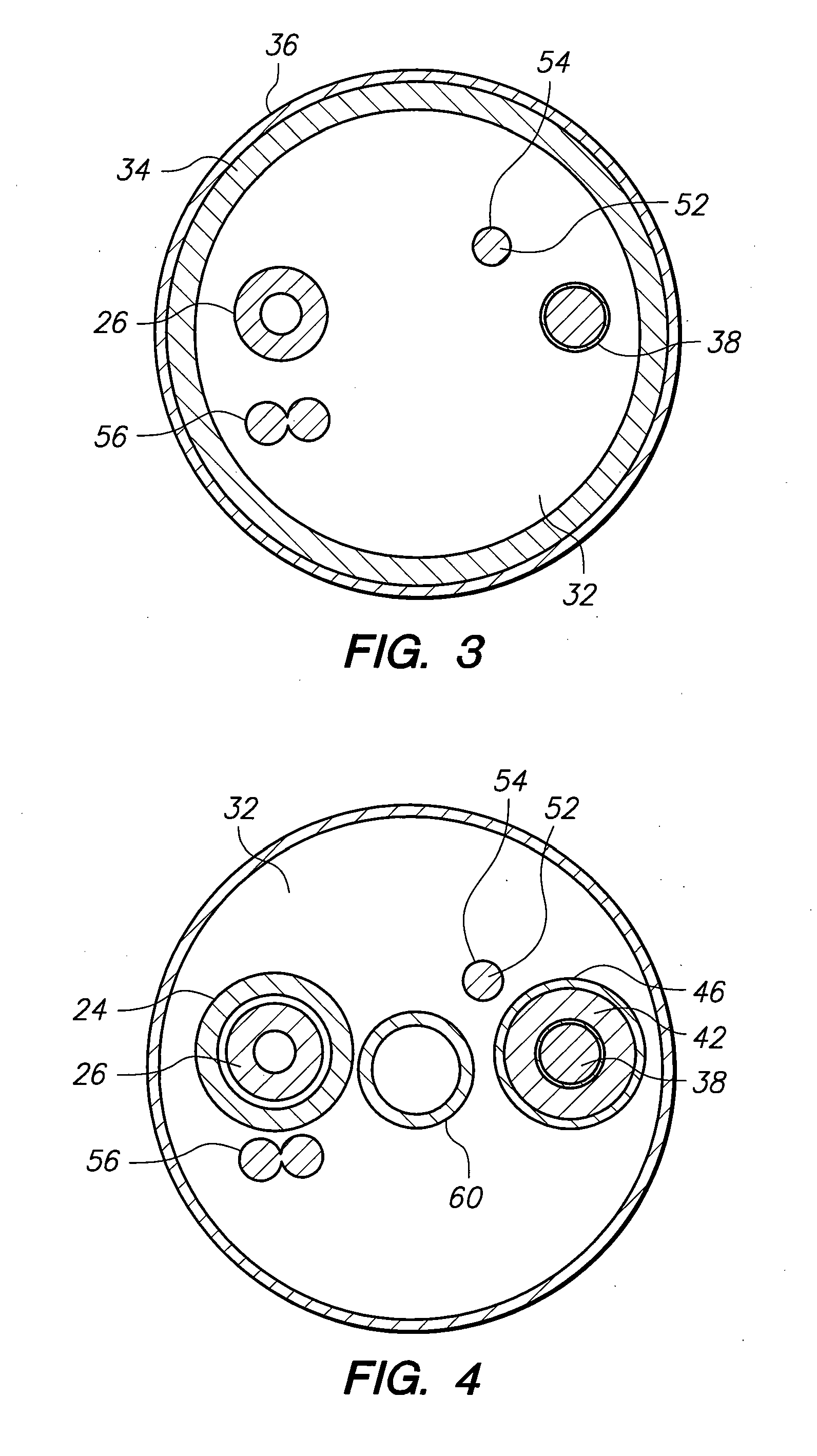Cryo-applicator cross-section configuration
a technology of cryo-applicators and cross-sections, which is applied in the field of configuration of cryo-applicators, can solve the problems of low ablation temperature, insufficient cryo-ablation tissue efficiency, and large latent heat transfer, and achieves low supply pressure, low return pressure, and greater flow capacity.
- Summary
- Abstract
- Description
- Claims
- Application Information
AI Technical Summary
Benefits of technology
Problems solved by technology
Method used
Image
Examples
Embodiment Construction
[0022]Referring initially to FIG. 1, a system (generally designated 10) having a cryo-catheter 12 and catheter handle 14 is shown. For the present invention, the system 10 can be used as part of a cryoablation apparatus to cryoablate a lesion in a body conduit of a patient (patient not shown). Although the system 10 is described herein for a catheter 12, those skilled in the pertinent art will appreciate that the systems and methods described herein can be implemented with other applicators such as a cryo-probe (not shown) that is configured to contact and ablate exposed tissue.
[0023]As indicated in FIG. 1, the cryo-catheter 12 includes an articulation segment 16 that can be deflected using the catheter handle 14 into different configurations and orientations. FIG. 1 further shows that the cryo-catheter 12 includes a braided segment 18 that extends distally from the catheter handle 14 to the articulation segment 16. It can be further seen that the cryo-catheter 12 includes a distal ...
PUM
 Login to View More
Login to View More Abstract
Description
Claims
Application Information
 Login to View More
Login to View More - R&D
- Intellectual Property
- Life Sciences
- Materials
- Tech Scout
- Unparalleled Data Quality
- Higher Quality Content
- 60% Fewer Hallucinations
Browse by: Latest US Patents, China's latest patents, Technical Efficacy Thesaurus, Application Domain, Technology Topic, Popular Technical Reports.
© 2025 PatSnap. All rights reserved.Legal|Privacy policy|Modern Slavery Act Transparency Statement|Sitemap|About US| Contact US: help@patsnap.com



